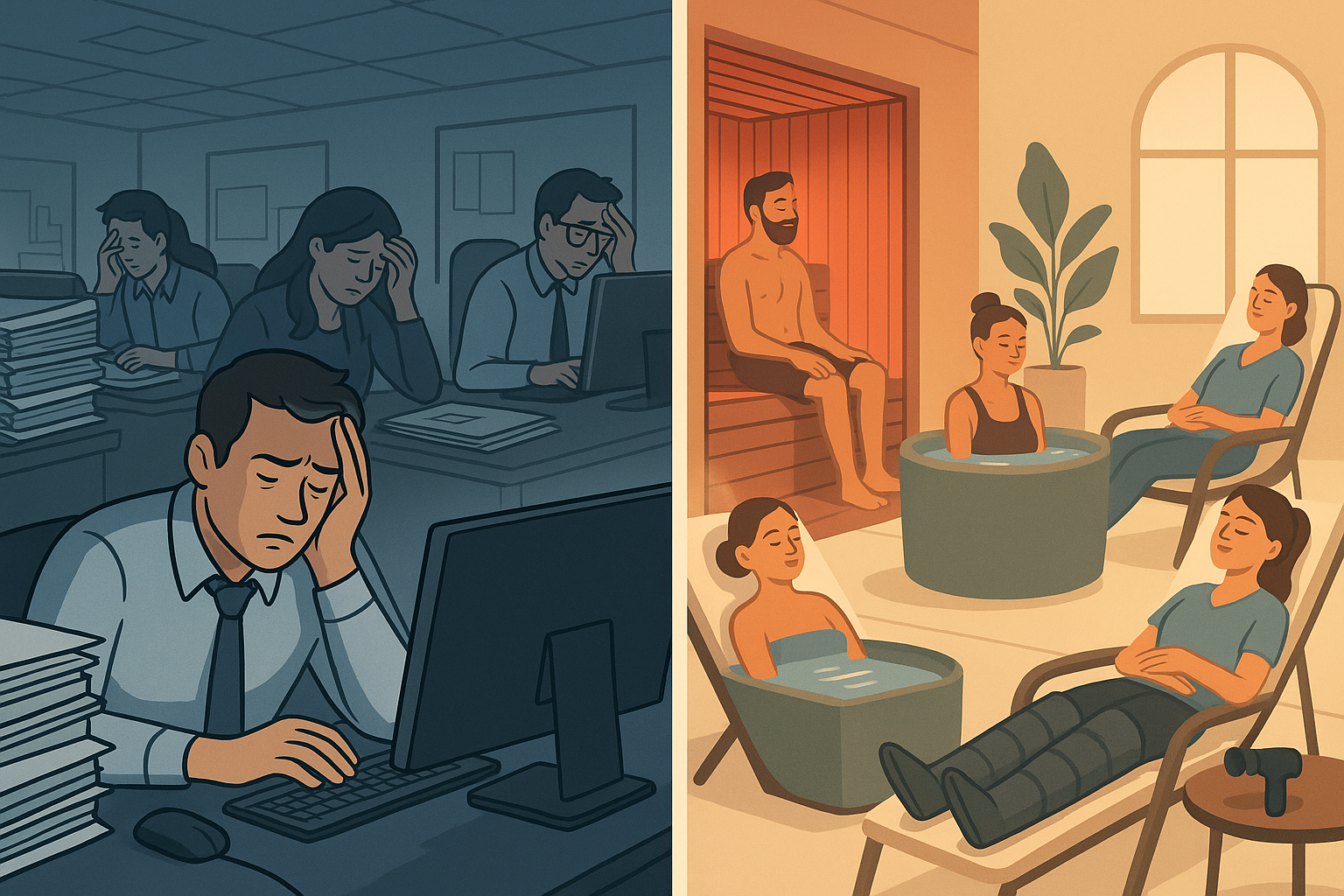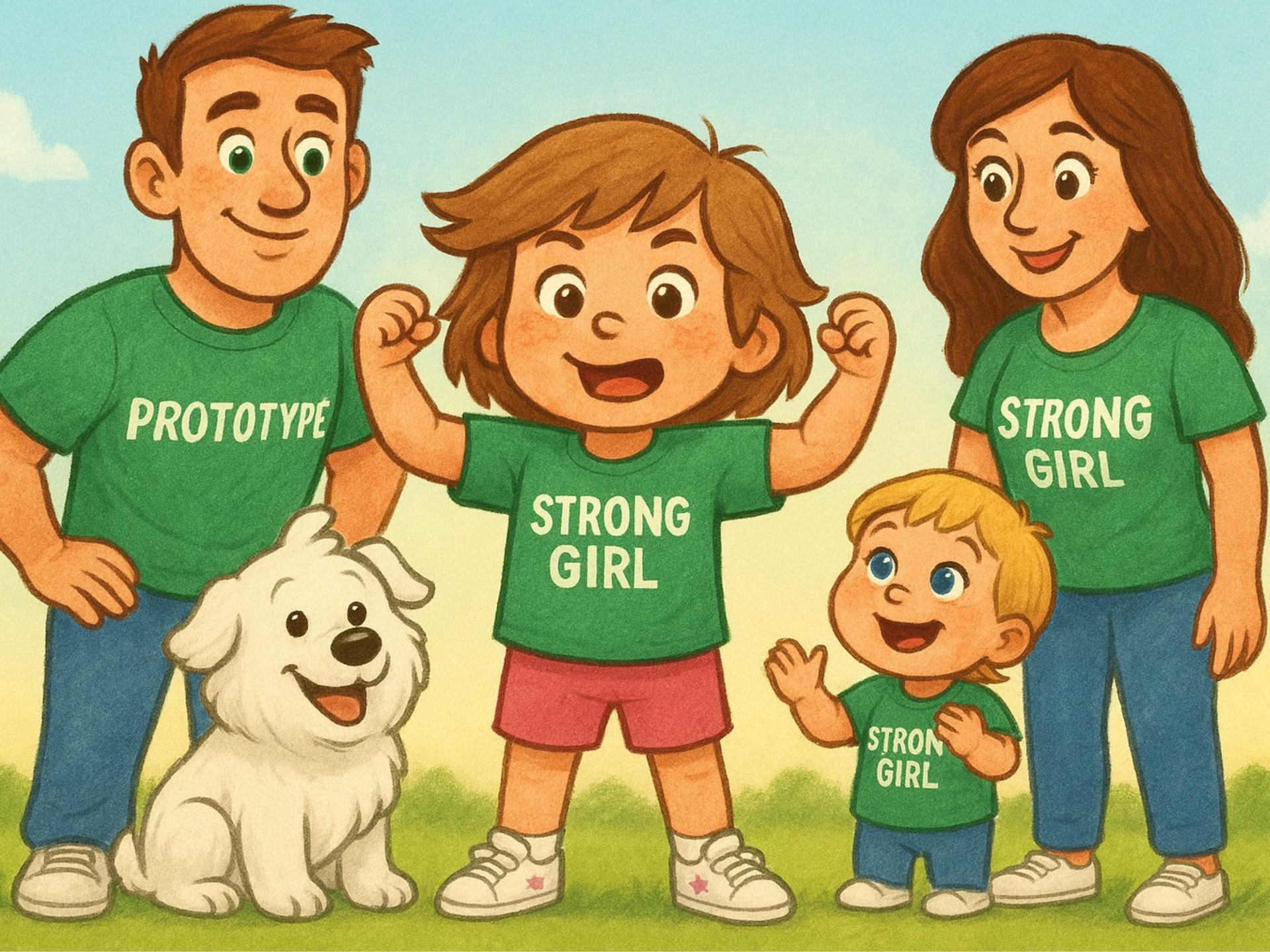Prototype Performance and Recovery Series: Part 1 “The Importance of Maximizing Your Energy”
Prototype Performance and Recovery Series: Part 1
“The Importance of Maximizing Your Energy”
By: Mike Collette (CEO & Founder of Prototype Training Systems)

I’m starting this blog series to share not only knowledge about what we’ve been learning, experiencing, and coaching in the realm of performance and recovery. In addition, one of my goals is to help create a bridge between the physical side of training and the mental side of training.
What’s always fascinated with me is this notion of “mental fitness”
. How do people dial up courage when it’s needed most? How do people truly overcome real challenges in their lives? How do you take something that could be a story of how you lost and turn it into a story of how you can win?
On the flip side, I’ve seen some incredibly impressive feats of fitness, strength, and endurance since opening Prototype in 2012. There is a mental side on being able to endure grueling physical elements, dedicate time and effort to improve the physical skills that are required and entirely change your body to what you want it to become.
In this blog series, we’re going to explore the connection between the physical training elements to help optimize your performance, and even more importantly, how to recover to be able to perform at your very best. That performance is relative… so whether it’s on the field, in the gym, in the classroom or in the board meeting, these principles apply.
Energize Your Life: Insights from Dr. Jim Loehr
In a recent episode of The Knowledge Project with Shane Parrish , Dr. Jim Loehr, a renowned performance psychologist and founder of the Human Performance Institute, shared some really cool insights on energy management and its critical role in achieving success. I wanted to share some of my takeaways as I deep dive into his strategies, complemented by research-backed insights.
The Importance of Energy Management
Energy Surplus for Full Engagement To achieve full engagement in any activity, whether in sports, business, or personal life, an energy surplus is essential. Loehr emphasizes that being a “big spender” of energy requires strategies to both increase energy levels and mitigate energy drains. This aligns with research suggesting that energy management is crucial for high performance (Schwartz & McCarthy, 2007). Something I found interesting is Jim Loehrs approach to Energy vs. Time management. He argues that energy, rather than time, is the most critical resource for high performance and productivity.
Energy as the Core Resource Loehr explains that while time is finite, energy can be expanded and renewed. Effective energy management allows individuals to achieve more within the same time constraints by maximizing their capacity to perform. This made me think of the times when you’re about to go on vacation and you’re fully capable of getting a full day of work, maybe a full week of work done in a short time. Being able to call on that or be more productive is not only a trainable skill, it requires deliberate methods to optimize it.
Health as the Foundation of Performance: This may be one of the coolest parts of the podcast and I love it… Loehr’s mantra, “Health ignites performance,” underscores that the healthier you are, the more energy you have. This is supported by numerous studies showing that physical health significantly boosts cognitive function and overall performance (Ratey & Loehr, 2011). My mental model on this draws the direction connection between the mind and the body. Comparing it to the physical training domain, the fitter you are, the easier it is to recover from harder bouts of exercise. Similarly when it comes to stress management, which I’ve been thinking and calling it “life management”, the faster we can recover from the hard stuff and the more adaptable we are, the greater the probability of success.
Strategies for Increasing Energy
Identify Energy Drains Understanding what depletes your energy is as crucial as knowing what boosts it. Environmental factors and negative relationships can sap your energy. Research indicates that a positive work environment and supportive relationships are critical for maintaining high energy levels (Bakker & Demerouti, 2007).
When I was listening to the podcast, I started to immediately think about what gives me energy and then what takes away my energy. Exercise can take your energy, but I look at exercise or proper hydration and nutrition as investments that will compound or multiply your energy. We often think about what MORE can we do, vs. what can I remove or take away to increase my energy. It’s something to think about or observe on a daily basis. Having that level of awareness can be a difference maker in your life.
Oscillate for Optimal Performance Loehr advocates for oscillation – alternating between intense activity and rest. This concept is backed by studies showing that taking regular breaks can enhance focus and productivity (Trougakos et al., 2008). He cites the example of tennis players who use short breaks between points to reset mentally.
A simple analogy is interval workouts, where you work hard for a certain period of time followed by some sort of rest bout. Another way I approach oscillations is when I’m in a bout of intense work or my mindset isn’t quite right, how can I mentally reset? This could be a short walk, doing some activities that require low cognitive load (picking things up, cleaning, etc) or even watching a funny video (or 2). It’s hard to stay fully focused 100% of the time, but we can create rituals or deliberate habits to help us recover our energy for what matters.
The Role of Stress and Recovery
The Necessity of Recovery Loehr explains that stress itself isn’t harmful; it’s the lack of recovery that causes damage. Chronic stress without adequate recovery can lead to burnout and health issues. Studies support this, highlighting the importance of recovery periods in stress management (McEwen, 1998).
I think we all know that stress is a part of life (hence my “life management” reframe), but a life without stress would be one without growth. From my leadership development work with Next Jump , the co-CEO’s have shared their experience and learnings from Psychologist Jim Fadigan (founder of Learn to Learn) on humans are wired to both want to grow but also to protect, and there is this dichotomy between two.
We all want to grow and improve, however, what’s required to break through those barriers, we may often want to hide or avoid due to stress, fear, and anxiety… because what’s required may require us to fail, or look stupid, or just flat fall on our face.
Rituals for Mental Reset Developing deliberate habits or rituals can help in managing stress and maintaining high performance. Loehr mentions the example of athletes using specific routines to reset between activities. This is supported by research showing that rituals can enhance performance by reducing anxiety and improving focus (Brooks et al., 2016).
I shared a bit about this idea of “rituals” to create to oscillate. A simple one could be setting a time for a walk in between stressful meetings, or a 5 minute stretching session. What I really like in how Loehr describes this is how they are set up deliberately to help OPTIMIZE your performance.
Controlling Fear Through Physical Presence
Physical Presence and Fear Management Loehr asserts that we can control fear by maintaining a strong physical presence. This idea is supported by studies on body language and its impact on psychological states. Adopting powerful, expansive postures can reduce feelings of fear and increase confidence (Carney et al., 2010).
This is the part of the podcast that I have the most skepticism about, but in theory it makes sense. It reminds me a bit of “fake it until you make it”, but until you truly EARN the confidence through experience, you may be putting on a bit of a mask. These are my opinions and thoughts and I could be very wrong
Conclusion
Dr. Jim Loehr’s insights offer valuable strategies for managing energy, stress, and performance. By understanding and implementing these strategies, you can enhance your energy levels, achieve full engagement in your activities, and ultimately improve your overall performance.
For more details and in-depth discussions, listen to the full episode of The Knowledge Project with Shane Parrish here .
References
- Bakker, A. B., & Demerouti, E. (2007). The Job Demands-Resources model: State of the art. Journal of Managerial Psychology , 22(3), 309-328.
- Brooks, A. W., Gino, F., & Schweitzer, M. E. (2016). Smart people ask for (my) advice: Seeking advice boosts perceptions of competence. Management Science , 61(6), 1421-1435.
- Carney, D. R., Cuddy, A. J. C., & Yap, A. J. (2010). Power posing: Brief nonverbal displays affect neuroendocrine levels and risk tolerance. Psychological Science , 21(10), 1363-1368.
- McEwen, B. S. (1998). Stress, adaptation, and disease: Allostasis and allostatic load. Annals of the New York Academy of Sciences , 840(1), 33-44.
- Ratey, J. J., & Loehr, J. E. (2011). Spark: The revolutionary new science of exercise and the brain . Little, Brown and Company.
- Schwartz, T., & McCarthy, C. (2007). Manage your energy, not your time. Harvard Business Review , 85(10), 63-73.
- Trougakos, J. P., Beal, D. J., Green, S. G., & Weiss, H. M. (2008). Making the break count: An episodic examination of recovery activities, emotional experiences, and positive affective displays. Academy of Management Journal , 51(1), 131-146.
Previous Blogs

Climb to New Heights
Prototype Training Systems is more than a gym - it is a lifestyle. Join us today!



